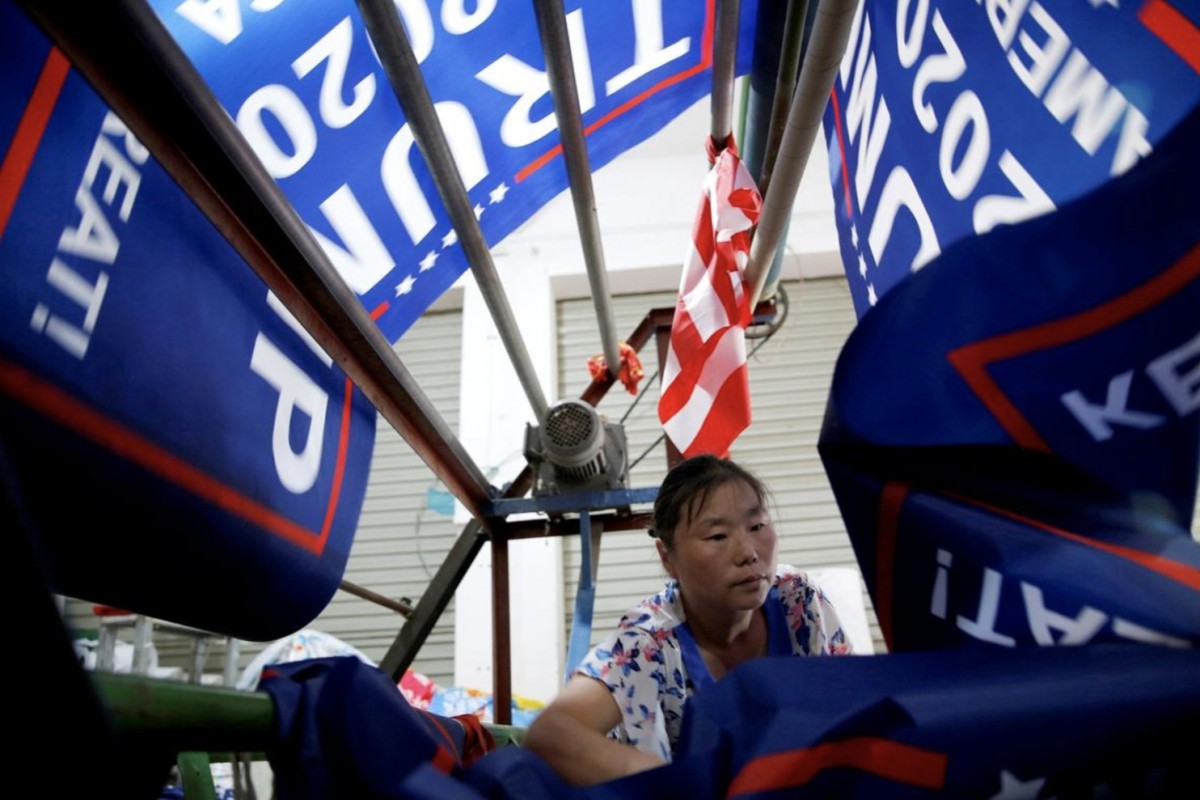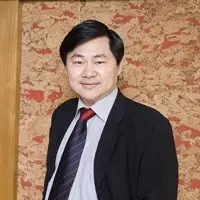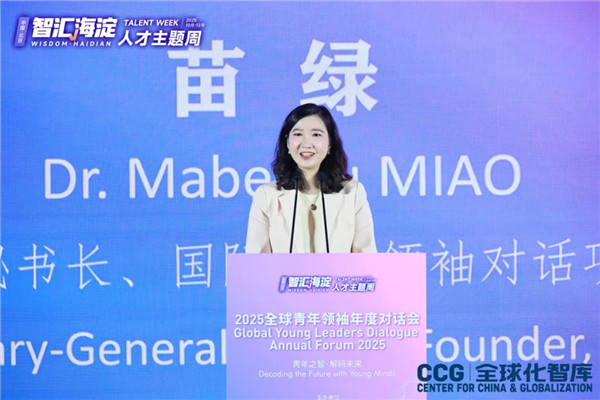Wang Huiyao: 2020 should bring acceptance of different development models
January 08 , 2020

A Chinese worker sews flags for US President Donald Trump’s “Keep America Great!” 2020 re-election campaign at a factory in Fuyang, Anhui province, China, on July 24, 2018. Decoupling the US and Chinese economies will be complicated and trigger reverberations around the world. Photo: Reuters
US President Donald Trump recently announced that China and the US will sign the much-anticipated “phase one” trade agreement in Washington on January 15. This is a positive note on which to open the new decade, raising hopes for a timely end to the damaging trade war. However, in the long run, it will take more than a single trade deal to sustain an open global economy.
We live in a multipolar world where it is clear there is no “one-size-fits-all” answer to development. At the same time, the world is more interdependent than ever, bound by global value chains, cultural ties and transnational challenges.
To make a success of the coming decade, we must bridge these realities and find ways to accommodate different development models while boosting international cooperation through a mindset that seeks “harmony amid difference” in the course of globalisation and development.
Any thoughts of “decoupling” between China and the US should be banished, as this would hurt not only both countries but the entire global economy.
Three decades ago, the end of the cold war led some to predict that all nations would eventually converge on the West’s particular brand of liberal democracy and free-market capitalism.
From the 1980s to the 2000s, belief in a “universal recipe” for development saw global institutions prescribe identikit development plans to all kinds of countries. Meanwhile, as globalisation accelerated, some scholars predicted that cross-border flows of people, goods and information would eventually flatten the world and render local differences unimportant.
Today, we see that, far from the “end of history”, that period was actually the prelude to a new, multipolar chapter of global development.
Economic globalisation has made the world more interdependent, but certainly not uniform. With the rise of emerging economies, and especially since the 2008-2009 global financial crisis, the world has become increasingly multipolar. This is most evident in the rise of Asia, which this year will overtake the rest of the world combined in gross domestic product terms.
As the post-World-War-II global governance system comes under more strain, regional multilateral initiatives have proliferated. Last year saw major free-trade agreements come into force in Africa and the Asia-Pacific. Over 100 countries now participate in the Belt and Road Initiative, and there are high hopes of the Regional Comprehensive Economic Partnership being completed in 2020.
These are just part of the emerging patchwork of regional initiatives, showing the demand for flexible trade architecture that fits all kinds of countries and development models.
Alongside multipolarisation, there has been an intellectual shift in how we understand development.
Decades of empirical evidence show that “cookie-cutter” formulas for development don’t deliver for the world’s poor. As Harvard economist Dani Rodrik notes, a development consensus has emerged that emphasises pragmatism and gradualism. Countries succeed by devising their own mix of remedies tailored to local constraints, not by following international dictates.
So, what does this all have to do with the trade war? Underlying recent trade frictions are different views on how an economy should be run, questions such as the role of government in innovation and industry, or what function companies should serve.
Multipolarity and the new development consensus show that we must learn to live with different answers to these questions, find ways to accommodate “developmental diversity” while upholding the institutions that support international cooperation. This kind of diversity doesn’t have to detract from closer integration. It can be an asset, not a threat.
In nature, we value biodiversity as part of a healthy ecosystem. It represents the collective knowledge of how to thrive, gained by species evolving over millions of years. Similarly, different approaches to development reflect the experiences of societies around the world. And, unlike genetic traits, countries can freely borrow and adapt features from others to suit their own needs.
China has learned much from the successful experiences of the West, and will continue to do so. Policymakers elsewhere may draw on China’s experience. But China will never seek to “export” its model or challenge the existing order. Ultimately, countries must forge their own paths to development.
That China’s economy and governance system differ from that of Western countries does not have to lead to confrontation. Shared interests more than outweigh the differences that exist.
For example, 2020 marks the last year of China’s 13th five-year plan and the drafting of the next plan that will run from 2021 to 2026. These exercises enable the nation to set long-term developmental goals and find the resources to meet them.
They are part of the economic system that has allowed China to rise from poverty to become by far the largest driver of global growth in recent years. China is also contributing to multilateralism with new initiatives such as the Asian Infrastructure Investment Bank.
Rather than focus on ideological or other differences, we should “seek truth from facts” and take an empirically-grounded view of China’s development. If China’s model works for the country and allows it to make major contributions to the global economy, then the rest of the world should learn to accommodate that.
Indeed, the opportunities that China’s vast market offers to other countries will continue to grow over the next decade as its economy opens up. This year will see major steps forward, including the implementation of a new foreign investment law and further liberalisation of financial services and other sectors.
And, as China continues to reform, it is not just markets that are opening, but also ways of thinking.
This approach of seeking “harmony amid diversity” and accommodating different points of view and ways of doing things has a long history in China. Over two millennia ago, Confucius taught that the noble are able to live in peace with those who have different ideas. As our complex, multipolar world enters the 2020s, this lesson continues to be as valuable as ever.

Dr. Wang Huiyao, founder and president of the Center for China and Globalization(CCG), an independent think tank based in Beijing.
Topical News See more






